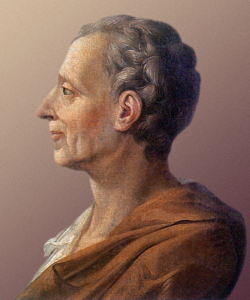 In 2002 Will McWhinney was writing his never finished book “Grammers of Engagement“.
In 2002 Will McWhinney was writing his never finished book “Grammers of Engagement“.
One of the scientists he was communicating with was Rodney Michael John Cotterill (1933-2007).
Will send me an article of John Cotterill called “Cooperation of the basal ganglia, cerebellum, sensory cerebrum and hippocampus: possible implications for cognition, consciousness, intelligence and creativity” .
The article contains a systematic exploration of the Sensory-Motor System of all the organisms on earth noting that the underlying behavioral strategy of Earth’s creatures does not appear to have changed in the four billion or so years since they sprang from their last common ancestor.
In the body the motor output is supported by the underlying anatomy. The various signaling routes appear to converge on the frontal lobe’s movement-mediating areas, that is to say the primary motor cortex (M1), the premotor and supplementary motor cortices, and the prefrontal cortex (PFC).
The anatomical details show that the three main movement-provoking streams in higher animals function cooperatively. When the cooperative mechanism is working at full strength the result is overt movement.
The article shows what part of the system was added at what moment and what the effect was of this addition. Strangely enough Cotterill comes to the conclusion that we THINK with the SPINDLES in our MUSCLES.
Muscle spindles are found within the fleshy portions of muscles, embedded in so-called Intrafusal fibers. These fibers are walled off from the rest of the muscle by a collagen sheath. This sheath has a spindle shape. While the intrafusal fibers are wrapped with sensory receptors, their counterpart, are responsible for the power-generating component of muscle and are innervated by motor neurons.
In another Blog I already showed that the Collagen Fibers in our Body are exactly mapped on the Meridians that are used in Acupuncture.
The article of Cotterill is very difficult to read if you don’t know anything about the terminology of the Brain but the Schema’s (The Wiring) in the article are very convincing.
This is what Will wrote: “Rodney Cotterill (2001) presented an important integration of the research on the brain structure. His neuro-physiological work radically undermines any support remaining for the stimulus-response schema, replacing it with motor-environment-mind schemata of complex feedback loops. The complex of feedback loops enables one to “Know what one knows.”
Cotterill goes beyond this, writing: “The ability to know that one knows is referred to by psychologists as first-order embedding. Higher embedding, such as that exemplified by knowing that one knows that one knows, merely depends on the ability to hold things in separate patches of neuronal activity in working memory. This manifests itself in the creature’s intelligence, which also dictates its ability to consolidate existing schemata into new schema.” “This ability, labeled intelligence, is a unique feature of mammalian brains. Intelligence and reflection are explained as due to functioning of the web of feedback loops, both internal and external, that evolved in higher animals“.
What Will is explaining is that the connection between all the spindles in our muscles is a very complex feed-back system. This feed-back system is able to create higher levels of “Abstraction” by the use of “Self-Reference”.
The experience in our body is stored in Schema (Action Patterns). “A schema is a reproducible linking of motor-directing actitity to the optimal environmental feedback resulting from that activity, the reproducibility stemming from the fact that schemata are laid down in the available form of memory“.
The schema are learned by Copying the Behavior of Others. We are not only copying we are Mirroring the Other. This is exactly what people in NLP call Pacing & Leading.
Recent advances in the cognitive neuroscience of action have considerably enlarged our understanding of human motor cognition. In particular, the activity of the mirror system, first discovered in the brain of non-human primates, provides an observer with the understanding of a perceived action by means of the motor simulation of the agent’s observed movements.
This discovery has raised the prospects of a “motor theory of social cognition“. Human social cognition includes the ability to mindread, which in turn plays a crucial role in human communication.
Again a citation of Will McWhinney:
“Pacing develops through a harmonizing across the spectrum of enunciations and responses. In human communication, rhythm orchestrates the voices, expressions, e.g., sentences, reception processes, rhythms of the body, demands for attention within and among the participants, and long waves of cultural accommodation across the whole set of conversants. A conversation is effective when the pacing of each element synchronizes with the others: all the phonemes of a word need to be completely expressed before a speaker begins to generate the next word. Interruptions in this flow produce stuttering, in speech or thought. The breathing must enable a sentence to be phrased, expressed on a single breath or broken in relation to its grammatical structure. The listeners simultaneously construct the sentences in their own neuro-muscular structure“.
When we are Unable to Mirror we are “Out of Tune” and the dialogue stops. Mirroring forms the basis for Empathy and Language. It is also the main reason why Autists have a difficulty to communicate.
I end this blog with a citation of Ritchie produced in 1936:
“At the suggestion that muscular movement may be intellectual I feel that there will be a stirring of indignation among the highbrows. They will say, “Why all these talk about acrobats and muscular activity? Granted that what the acrobat does is perfect of its kind it is not properly an intellectual activity, like the mathematician’s for instance”. In reply to this I should admit at once that what the mathematician does is much more useful than what the acrobat does; but is there any reason apart from snobbery for saying it is more intellectual? In effect the acrobat thinks with the muscles of his whole body while the mathematician thinks with – well, whatever it is he thinks with. Of course it may be that the mathematician does not think with anything but just thinks. Even if this were true, which is doubtful, I find it hard to see why thinking with nothing should be more truly thinking than thinking with your muscles. Because thinking is mental it does not follow that it is not bodily too“.
Cognitive Scientists like Lackoff, Nunez and Dehaene have found an explanation for the “Thinking of the Mathematican“. They are able to mirror, to entrain, to tune, to pace, to synchronize to the “Actions Patterns of the Conscious Universe“.
These Actions Patterns have a lot in common with Music and Harmony. Pythagoras was not the only one who talked about the Music of the Spheres. It also explains why Mathematicians are always (like me) in Love with Music.
LINKS
About Mirroring
About the Emotions of Bacteria
About the Evolution of the Mammals
About the Tetraktys of Pythagoras
 In 2002 Will McWhinney was writing his never finished book “
In 2002 Will McWhinney was writing his never finished book “ Montesquieu tried to balance the Power of the State. He defined three functions called the Executive, the Legislature and the Judiciary.
Montesquieu tried to balance the Power of the State. He defined three functions called the Executive, the Legislature and the Judiciary.